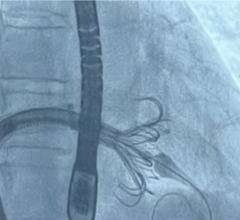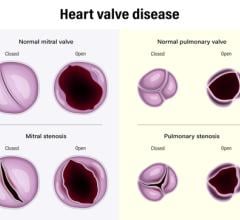
September 16, 2014 — The Minneapolis Heart Institute Foundation (MHIF) announced its first implant of the Portico Re-sheathable Transcatheter Aortic Valve System, developed by St. Jude Medical. With this, MHIF became the first hospital in the Midwest and the third in the country to implant the Portico valve as part of the Portico Re-sheathable Transcatheter Aortic Valve System U.S. IDE Trial (PORTICO clinical trial).
The Portico heart valve is used during transcatheter aortic valve replacement (TAVR) procedures, during which the valve is delivered via a catheter through a transfemoral artery or alternative access point. This eliminates the need for invasive open-heart surgery. As such, the PORTICO trial is enrolling patients who are considered to have a high or an extreme surgical risk that has eliminated them from consideration for open-heart surgery.
The Portico valve is the first transcatheter aortic valve that can be completely resheathed (brought back into the delivery catheter), repositioned at the implant site, or retrieved after partial deployment and prior to final implantation. This helps to ensure accurate placement of the valve, ultimately simplifying the implant procedure and minimizing procedural risk for the patient. Further, the valve is positioned in the patient’s heart as it continues to beat, which alleviates the need for cardiopulmonary bypass.
MHIF, with its pursuits and commitment to the latest innovations in patient care, played an integral role in this development. Vibhu Kshettry, MHIF researcher and cardiovascular thoracic surgeon at Minneapolis Heart Institute at Abbott Northwestern Hospital (MHI), led efforts during this first implantation and described the Portico system as an “ongoing improvement in current percutaneous technology and a step forward in acute management of this high-risk population.” Wesley Pedersen, MHIF researcher and cardiologist at MHI, worked in conjunction with Kshettry on this first case and noted, “My preliminary experience with this system fills in several gaps not currently addressed in transcatheter treatment of aortic stenosis - those being ease of use, minimization of paravalvular leak, and need for permanent pacemaker.”
For more information: mplsheart.org


 September 04, 2024
September 04, 2024 








